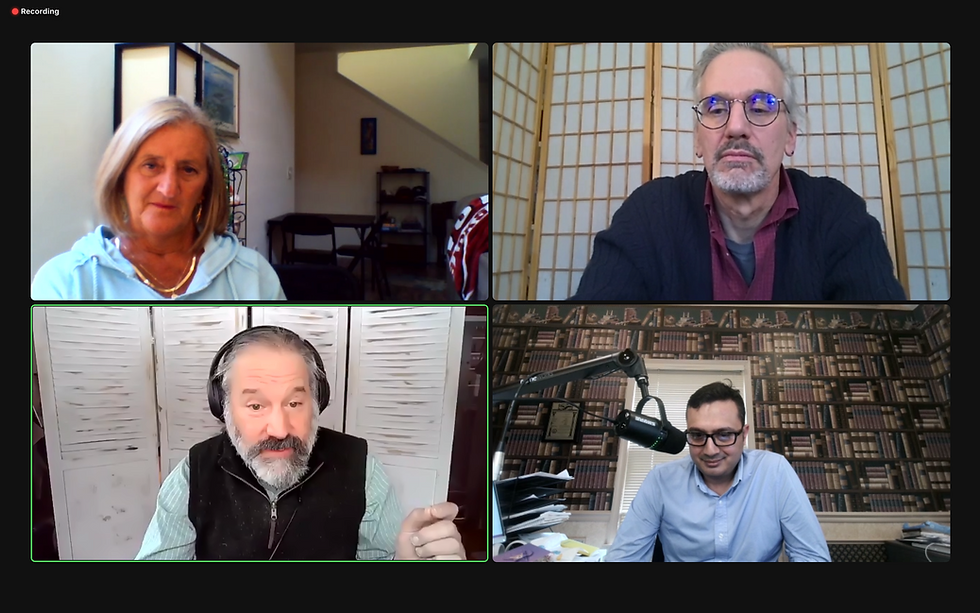Resiliency in Academia: Lessons Learned from COVID-19
- Yellowdig Team

- Mar 10, 2022
- 3 min read
Updated: Sep 20, 2023

With such decreased physical distance between learner and faculty during the COVID-19 pandemic, the typical world of academia was flipped upside-down. Without choice, faculty had to adjust to their new concerns within their profession while balancing the heavy toll of what is COVID-19. This is no small feat.
But in this time, faculty rose to the challenge, and they used the time to truly think about and reframe their goals. This speaks to the resiliency of the modern instructor. On March 1st, Yellowdig hosted a webinar, moderated by Michael Feldstein and featuring Dr. Vicky Crittenden, Dr. Jesse Ballenger, and Shaunak Roy.
Meet the Speakers
Michael Feldstein, Chief Innovation Officer at Argos Education
Dr. Vicky Crittenden, Professor of Marketing at Babson College
Dr. Jesse Ballenger, Clinical Professor at Drexel University
Shaunak Roy, Founder and CEO of Yellowdig

Experience Insight
From the past two years, one of the greatest lessons we have learned is centered around vulnerability. Nothing can achieve the highly sought after, yet impossible title of perfection– and this is something that faculty, learners, and the world alike had to learn.
So where did this leave academia faculty? Dr. Jess Ballenger reflects on his experience in managing challenges, expectations, and connection. For him, and the many attendees in the chat sharing their experiences, one of the hardest transitions was going from a face-to-face environment to a synchronous virtual classroom, where students– for varying valid reasons– did not turn on their cameras. This dichotomy between respecting students’ lack of camera use and feeling an energy drain from within while teaching was the subject of a great amount of thought into how to make this world better.

What Does the Research Say?
Dr. Vicky Crittenden had recently edited an article discussing faculty burnout due to COVID-19 for the Journal of Marketing Education. From the research she saw as well as her own experiences as a faculty member in the Marketing department, the barrier between home and work life was completely shattered. However, she says, “another word that has come out here was empathy.”
For the past two years, the world has been experiencing extremely connected emotional sensations due to the sheer impact of the pandemic. On the academia level, faculty and students have been so united in their struggles and sheer realness that has prompted a new level of empathy. However, at the same time, this connected feeling, in a way, contributed to faculty burnout from immense internalization of student feelings as well as their own.
As the CEO of an EdTech company, Shaunak Roy was faced with a new challenge– updating his platform to fit the needs of faculty. What he discovered was that more was needed than just talking to faculty on how to best support them; it was important to “engage with them more in the design phase of when they're actually thinking about using technology to kind of unpack the problem” in addition.
Being Comfortable With Discomfort

In general, Jess says, teaching is about the unpredictability of class discussions and being comfortable within that sphere. He says:
“For that pedagogy to be successful, you have to accept a kind of unpredictability, like, if you're going to tell people ‘I want to hear what you have to say,’ and this is what this class is about, you actually have to embrace what they say and sort of go with it. You can't mow people down. You can't dismiss… You kind of have to go in openly and [it’s] preparing yourself for the various sorts of things that have to happen.”
This openness was challenged, again, when synchronous meetings moved to an asynchronous fashion. It was about finding a way to recreate discussion when not meeting in real time. When the unpredictability of class becomes unpredictable, faculty gets creative and are pushed past previous norms– true resiliency.
Vicky chimed in with great insight into this paradox, adding that “controlled learning is passive learning.” It is not about letting go of control in the classroom in a COVID world, but 2020 also added insight into conversations regarding diversity, equity, and inclusion. Vicky discussed her gratitude for access to EdTech that helped to keep her connected to her students to promote active learning without keeping complete control of class topics and discussions. She speaks to her appreciation for technology in this time by saying:
“How can I, as a faculty member, know at what point I'm willing to give up control. And, I think that technology has enabled that… It’s a wonderful experience to combine those two– giving up control because of the technology.”

This conversation was a great insight into resilient teaching through the past two years and beyond. Thank you to our four panelists for their open and authentic words. This post is just a quick recap on some of the topics discussed. There is so much more to hear in the full webinar. Check out the full video here.



Commentaires